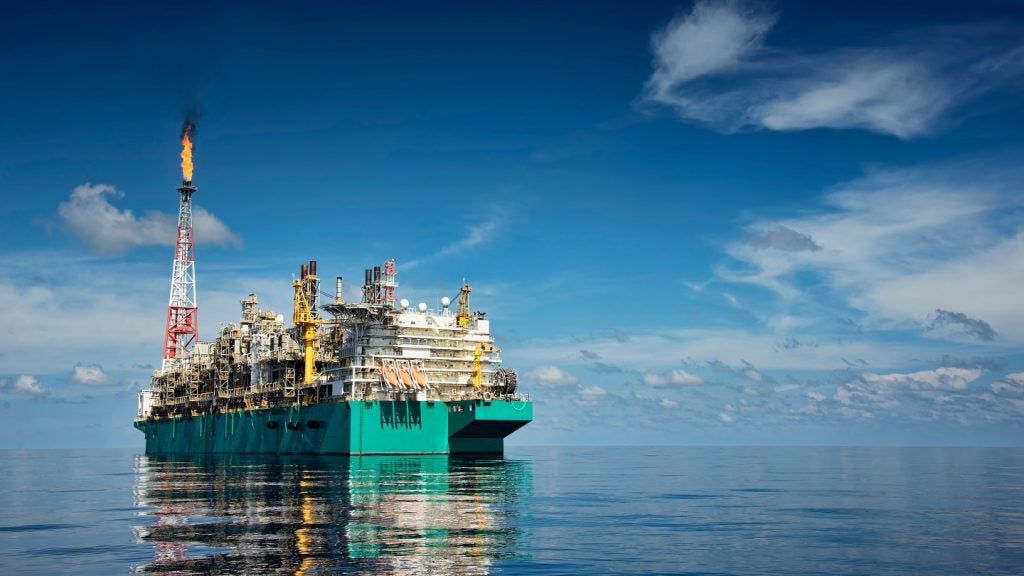
Listed below are the key technology trends impacting the ESG theme in oil and gas, as identified by GlobalData.
Technological innovation and increased consumer mindfulness will make sustainable alternatives to hydrocarbon-intensive products more attractive.
Renewable energy
Oil and gas majors are actively restructuring their businesses to incorporate renewable power capabilities in their portfolios. The majors are investing heavily in renewable energy projects, especially solar and wind power. BP has set a target of 50 gigawatts (GW) renewable power capacity by 2030, while Total and Eni have targets of 35GW gross capacity and 15GW capacity, respectively.
Carbon capture and storage (CCS)
CCS refers to various technologies that trap greenhouse gas (GHG) emissions before they can dissipate in the atmosphere, then store them deep underground. CCS is effective but complex and expensive. Nevertheless, it is central to many governments’ net-zero strategies. Tax incentives support CCS adoption in the US, and European Union (EU) countries are capitalising on industrial hubs and clusters for more effective CCS.
The oil and gas sector has adopted CCS more than any other industry. Many companies develop CCS capabilities in-house, and vending CCS technology is an attractive long-term opportunity for oil and gas companies.
How well do you really know your competitors?
Access the most comprehensive Company Profiles on the market, powered by GlobalData. Save hours of research. Gain competitive edge.

Thank you!
Your download email will arrive shortly
Not ready to buy yet? Download a free sample
We are confident about the unique quality of our Company Profiles. However, we want you to make the most beneficial decision for your business, so we offer a free sample that you can download by submitting the below form
By GlobalDataElectric vehicles (EVs)
EVs threaten hydrocarbon demand. Their replacement of traditional cars will erode the transport industry’s hydrocarbon demand, which is historically the highest of any industry. Operators should analyse the EV value chain for potential entry points such as fuel cell and battery development.
Liquefied natural gas (LNG)
As governments seek to reduce their carbon footprint, natural gas use will rise relative to coal and oil. LNG provides a means to transport natural gas via LNG carriers allowing access to markets where the cost of building gas pipelines would be prohibitive. Demand growth benefits the value chain by decoupling natural gas distribution from only nearby markets to new global markets across vast distances.
Artificial intelligence (AI)
AI, particularly predictive analytics, can reduce environmental harm from oil and gas activity. Pre-empting disruptions lets operators take preventative action before environmental damage is done.
AI can also help companies improve on-site safety: automating dangerous manual tasks with AI robots reduces worker hazard exposure; analysing historic accident records with AI can illuminate the causes and help avoid future accidents; and pre-empting equipment failures with predictive analytics reduces both the frequency and the difficulty of personnel deployments required.
Hydrogen
Hydrogen will become a source of cleaner power (zero-emission fuel) on a large scale. It is abundant, light, storable, energy-heavy, and does not produce direct GHG emissions. Sectors such as oil refining, ammonia production, methanol production, and steel production use hydrogen extensively. Hydrogen will see increased use in sectors such as transportation, buildings, and power generation.
In the short to medium term, hydrogen technology could be used to replace compressed natural gas (CNG) in some areas with minor changes to the existing infrastructure. Since many downstream oil and gas companies are already experienced with hydrogen, it is a logical strategic focus in the transition.
Industrial Internet
Operational health and safety can be improved with the Industrial Internet. Installing intelligent sensors on-field equipment particularly heavy machinery, such as excavators, earthmovers, trucks, and robotic equipment can improve human-machine collaboration at well sites to prevent accidents. Moreover, adopting autonomous or remotely-operated technologies for remote monitoring, inspection, material handling, and other operations vastly reduces the need for workers to engage physically with hazardous operations, thereby minimising risk to life.
Full-scale Industrial Internet implementation could help oil and gas companies minimise their environmental impact by optimising operational water and energy consumption. Deploying intelligent sensing technologies can also prevent spills and leaks.
Energy storage
ESS technology is a crucial hub for enabling energy management and ensuring the quality and reliability of power. Renewable energy sources are less reliable than hydrocarbons, and as the global energy mix transitions towards renewables, effective ESS will be in high demand in ESG strategies.
Wearable tech
Field personnel are prone to health issues and accidents while working in industrial settings, which involve remote locations, hard-to-access assets, extreme temperature and pressure variations, and heavy equipment. Wearable devices designed for field staff safety can monitor health conditions, protect staff from exposure to potential hazards and provide the live location of workers to onshore support teams. The devices can also monitor external environment conditions and send alerts to the wearer and other crew members.
Blockchain
Blockchain technology’s chief benefit for the oil and gas industry is the ability to execute transactions without the presence of a central authority and have a tamper-proof record of those transactions. It lets organisations transact business with one another without third-party control, which improves transparency and compliance. Blockchain’s other key applications for ESG in the oil and gas industry include smart contracts, raw materials tracking and quality control, trade reconciliation, transparency, compliance, and data security.
Drones
Drone use has grown steadily among oil and gas companies after BP received Federal Aviation Administration (FAA) approval to fly drones commercially in 2013. Drones’ surveying capabilities have been used for several ESG initiatives. ExxonMobil tracked and studied whales and the impact of operations thereon; Equinor, ConocoPhillips, and Shell inspect flare stacks and other infrastructure for defects and methane emissions; Chevron, Total, and Exxon have used drones for disaster management and other disasters.
Robotics
Robotics offers the potential to automate repetitive field operation tasks such as taking instrument readings, cleaning, and inspecting assets. Operators are also deploying robots to carry out tasks that are too risky to be undertaken by field personnel. Using robotic technologies, construction of offshore drilling platforms, laying of subsea pipelines, and drilling can all be de-risked. Robots can operate in harsh environments and are being deployed to gather data for non-destructive evaluation of pipes, valves, fittings, tanks, and oil platforms.
This is an edited extract from the ESG in Oil and Gas – Thematic Research report produced by GlobalData Thematic Research.







Related Company Profiles
ConocoPhillips
Ess Corp
Eni SpA
CCS Inc.
Exxon